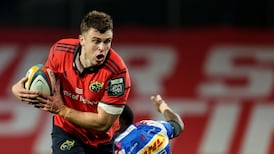The IRFU has rightly received plenty of criticism for their handling of the women's game of late. However, if you talk to those involved in the domestic club scene, one positive decision the governing body has made becomes readily apparent; the IRFU has structured this season's All-Ireland League campaign to reflect its importance to Ireland's Six Nations squad.
You often hear the line that women's rugby is a completely different game to the men's version. In terms of structure, here is a fundamental reason why: this Ireland 38-strong squad is based more on AIL club form rather than provincial success. You only need to look at Aoibheann Reilly, starting at scrumhalf against Wales on Saturday, who wasn't involved in the Connacht set-up at September's interpros due to being away with the Irish sevens squad.
“I dare say on her day Aoibheann is the best nine in the country,” says Ben Martin, Riley’s coach at Blackrock. “Spending a bit of time in that sevens programme over the last 12-15 months has really sharpened her skills and her work rate has gone through the roof. She’s always been a smart kid on the pitch but her ability to get to and from breakdowns has really shone this last period.”
People who played well in the AIL have been rewarded and that's all anyone can ask for"
That last period Martin refers to is the culmination of the AIL campaign which fed right into the Six Nations camp. The competition finished in a thrilling final between Railway and Blackrock, with Railway securing their second ever league title, before Greg McWilliams named his Six Nations squad less than a week later.
It was a schedule that allowed Ireland’s internationals to be with their clubs throughout the league season, something which created a twofold effect. Firstly, the rugby product the league offered was better for their presence, and secondly it led to a clear pathway for non-internationals to make McWilliams’ squad. Play well against the internationals just before the Six Nations and you know where you belong.
“People who played well in the AIL have been rewarded and that’s all anyone can ask for,” says Blackrock director of rugby Mick Hearty. “In the past it wasn’t clear how do you get into the Irish squad, how do you get capped, how far away are you from it?
“At least when someone is playing in an All-Ireland final against Railway and there’s 25-odd internationals on the pitch, they know then they can compete here, they’re at this level. It’s not as daunting then.
“But if you’re playing in an AIL that has all those Ireland players stripped away, you don’t know and you think then, ‘oh I’m playing club rugby which is far away from the next step’, and the truth is, it’s not. It’s all confidence, particularly for the younger players.”
The AIL certainly feels more loved now as a breeding-ground for future internationals. It shows, with nine uncapped players in the wider squad rewarded for their league form, three of whom are set for debuts on the weekend - Reilly, Blackrock prop Christy Haney and Railway loose forward Anna McGann. There is a perception that McWilliams is paying plenty of attention to the league, something which is giving players clarity.
“Greg is a breath of fresh air,” says Railway head coach John Cronin. “He’s engaged with all the clubs, he’s engaged with all the players, he’s at the games and if he’s not watching, he’s ringing coaches and speaking about players. He wants to know not only who they are as players, but also who they are as people.
“He selected a few from the league, a few from the English Premiership but he seems to prioritise the AIL. It’s a very good product, if you saw the final, Railway vs Blackrock, it was fantastic.”
Open book
Over in Blackrock, Martin echoes a similar sentiment. “In fairness, Greg has delivered on everything he wanted to do,” he says. “You can’t but admire the way he’s come in and embraced us as club coaches. He’s always on the end of the phone, for example we were looking at playing Christy Haney in at hooker and that opened up his mind to a versatility that he had no idea about.
The next step is to figure out how the provincial game fits in around that structure
“He’s trying to put in programmes for us as clubs to help his development, so he’s not having to focus on generic skills when they get into camp. It’s been very much an open book with Greg. Not to say that anyone previous to him wasn’t, but he’s seen what was there in the past and he’s trying to engage with it a bit more and making sure we have everything in line.”
There is of course a point to be made here about the league’s two best clubs this year. There are 10 clubs in the competition, but the top two, Railway and Blackrock, provide 11 of the Ireland 23 to take on Wales this weekend. This is largely down to investment; these two are seen as the ones that pump the most into their women’s sections. UL Bohs and Old Belvedere would also be in the upper echelon of that category.
How to create greater parity on that front in the league’s other six clubs is a longer conversation for a different day, but this Ireland Six Nations squad has reflected a simple, yet effective league model where performance in a quality competition leads directly to international recognition. The next step is to figure out how the provincial game fits in around that structure, but the key thing is the pathway to a cap remains clear.
Clarity is all the clubs want for their players at the end of the day. As Blackrock’s Hearty puts it: “Long may that last.”



















